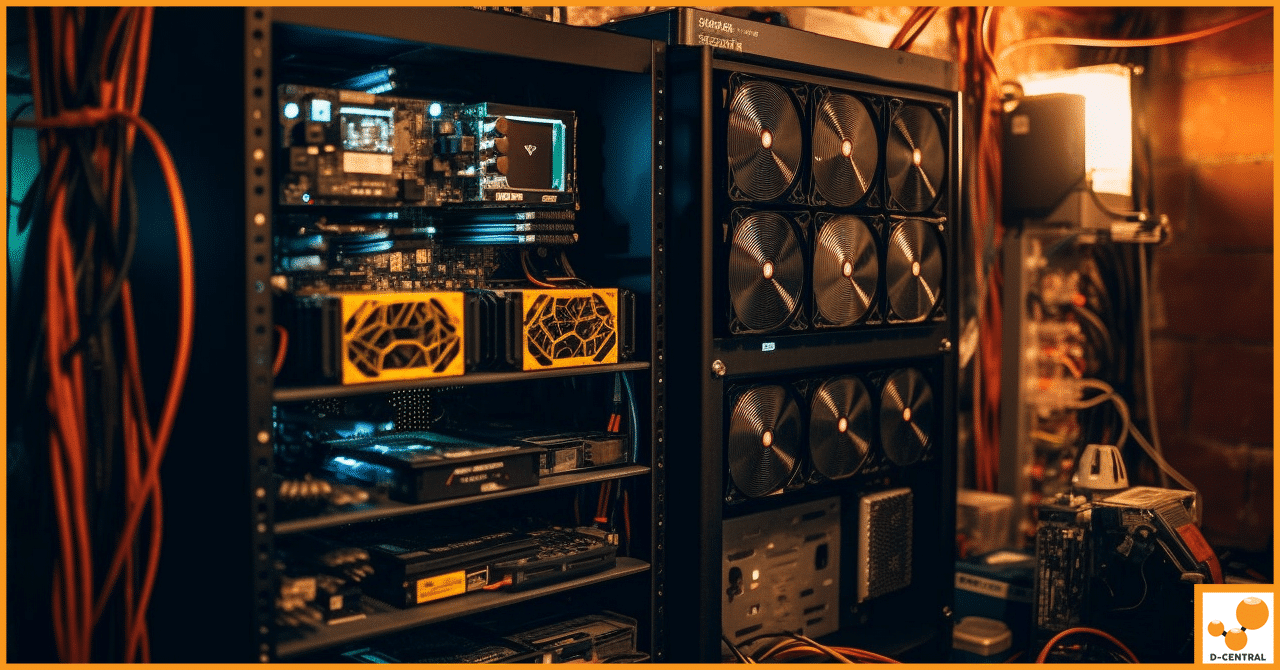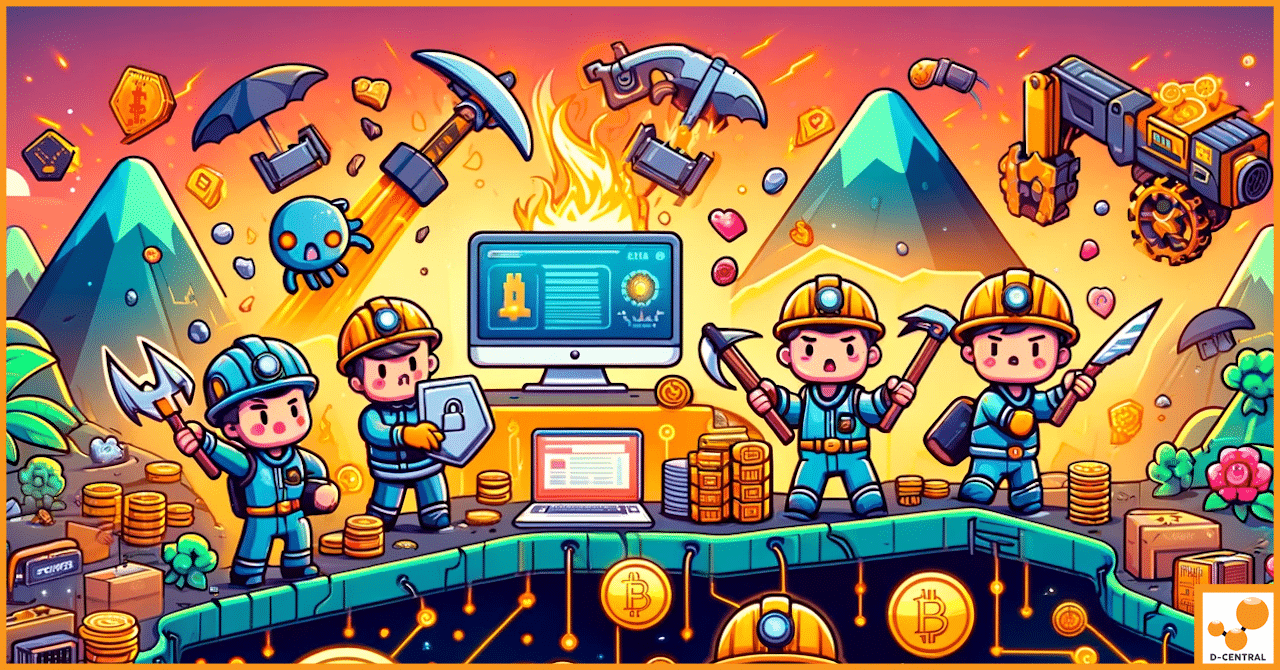
How to Optimize Your Home Mining Space and Layout with Antminer Shrouds
In the digital age, cryptocurrency has emerged as a golden ticket for tech aficionados, promising potentials of profit and innovation.
4479 Desserte Nord Autoroute 440, Laval, QC H7P 6E2

Bitcoin mining stands as the cornerstone of the cryptocurrency ecosystem, serving as the process by which new bitcoins are introduced into circulation and transactions are confirmed and secured on the blockchain. This intricate process involves miners solving complex cryptographic puzzles using specialized hardware, contributing to the decentralized and secure nature of Bitcoin. As the backbone of Bitcoin’s operational integrity, mining not only ensures the reliability and immutability of the blockchain but also plays a pivotal role in the distribution and decentralization of the digital currency.
However, the critical function of Bitcoin mining in maintaining the network’s security and efficiency also makes it a target for a myriad of threats. These threats range from physical damage and theft of mining equipment to sophisticated cyber-attacks aimed at compromising mining operations. The implications of such threats extend beyond individual miners, potentially affecting the overall stability and trust in the Bitcoin network. Therefore, the importance of security within Bitcoin mining operations cannot be overstated. It is imperative for miners to adopt robust security measures to protect their assets, maintain operational continuity, and uphold the integrity of the Bitcoin network.
In this context, threat modeling emerges as an essential practice for Bitcoin miners. Threat modeling is a structured approach that involves identifying potential threats to a system, assessing the vulnerabilities that could be exploited by these threats, and implementing strategies to mitigate risks. For Bitcoin miners, threat modeling provides a proactive framework to anticipate and defend against a wide array of security challenges. By systematically assessing their operations through the lens of threat modeling, miners can identify specific vulnerabilities, understand the potential impact of various threats, and prioritize security measures that safeguard their mining infrastructure and the broader Bitcoin ecosystem. This guide aims to demystify the process of modeling Bitcoin miner threats in five comprehensive steps, equipping miners with the knowledge and tools to fortify their operations against an ever-evolving threat landscape.
In the realm of Bitcoin mining, assets are the foundational components that enable miners to participate in the blockchain network, validate transactions, and secure new bitcoins. These assets can be broadly categorized into hardware, software, and data, each playing a pivotal role in the mining ecosystem.
Hardware: The backbone of any mining operation, hardware assets include the mining rigs themselves, often comprised of specialized devices known as ASICs (Application-Specific Integrated Circuits), GPUs (Graphics Processing Units), or other high-performance computing equipment designed for the rigorous demands of mining. Additionally, supporting infrastructure such as cooling systems, power supplies, and networking equipment are also critical hardware assets.
Software: Mining software is the conduit through which hardware interacts with the Bitcoin network. This category includes mining protocols that manage the hashing process, wallet software for storing mined bitcoins, and security software designed to protect the mining operation from cyber threats.
Data: In the context of Bitcoin mining, data assets encompass blockchain information, private keys, transaction data, and other sensitive information that miners interact with and generate during the mining process. The integrity and confidentiality of this data are paramount for the security and efficiency of mining operations.
Valuing these assets involves a multifaceted approach, considering not only their tangible market value but also their replacement cost and operational significance:
Understanding the spectrum of assets within a Bitcoin mining operation and their respective values is crucial for prioritizing security efforts. By recognizing the most valuable and operationally significant assets, miners can allocate their resources and security measures more effectively, ensuring that the most critical components of their operation are safeguarded against potential threats. This strategic approach to asset valuation and protection not only enhances the security of individual mining operations but also contributes to the resilience and reliability of the broader Bitcoin network.
In the intricate landscape of Bitcoin mining, recognizing potential threats is pivotal for safeguarding operations. These threats can manifest in various forms, each posing unique challenges to the integrity, efficiency, and security of mining activities. Understanding these threats is the first step towards developing robust defenses against them.
Physical Threats to Hardware: Physical security is a fundamental concern for Bitcoin miners. The high-value mining equipment is susceptible to theft, especially in regions where the security infrastructure may be lacking. Beyond theft, physical damage to hardware can result from accidents, natural disasters, or intentional sabotage, leading to significant operational disruptions and financial losses.
Cyber Threats: The digital nature of Bitcoin mining makes it a prime target for a range of cyber threats:
Operational Threats: The stability and continuity of mining operations can be threatened by operational issues such as:
Environmental Threats: The environment in which mining hardware operates can significantly impact its efficiency and longevity.
Threat Actors and Motivations: Understanding the range of potential threat actors and their motivations is crucial for effective threat modeling. These actors can vary widely in their capabilities, resources, and objectives:
Recognizing the breadth and depth of potential threats is a foundational aspect of securing Bitcoin mining operations. By understanding the nature of these threats and the motivations of the actors behind them, miners can better anticipate vulnerabilities, implement targeted security measures, and maintain the resilience of their operations in the face of evolving challenges.
Conducting a vulnerability assessment is a critical step in safeguarding Bitcoin mining operations. This process involves a systematic examination of mining infrastructure to identify, quantify, and prioritize vulnerabilities that could be exploited by potential threats. A comprehensive vulnerability assessment covers various aspects of mining operations, from software and network security to physical safeguards.
Software Security: The software that runs mining operations, including mining protocols, wallet software, and security solutions, must be scrutinized for vulnerabilities. Common software vulnerabilities include outdated software versions, unpatched security flaws, and insecure configurations. Regular updates and patches are essential to mitigate these risks. Additionally, employing secure coding practices and conducting code reviews can help prevent vulnerabilities in custom-developed software.
Network Protection: The network infrastructure connecting mining hardware to the Bitcoin network and other internet services is another critical area for assessment. Vulnerabilities here might include unprotected network ports, weak encryption, and inadequate firewall configurations. To protect the network, miners should implement strong encryption for data in transit, use secure protocols, and configure firewalls to limit access to essential services only. Network segmentation can also be beneficial, isolating critical components of the mining operation from less secure areas of the network.
Physical Security Measures: Physical vulnerabilities can range from inadequate protection against theft or damage to environmental controls failing to maintain optimal operating conditions for hardware. Assessing physical security involves evaluating the security of the premises, including locks, surveillance systems, and access controls, as well as the effectiveness of environmental controls like cooling and humidity management systems.
Vulnerability Scanning and Assessment Tools: Various tools and practices can aid in the vulnerability assessment process:
Best Practices for Vulnerability Assessment:
By conducting thorough vulnerability assessments, Bitcoin miners can identify weaknesses in their operations that could be exploited by threats. Addressing these vulnerabilities through targeted security measures is essential for protecting mining assets, maintaining operational integrity, and contributing to the overall security of the Bitcoin network.
After identifying and assessing vulnerabilities within Bitcoin mining operations, the next critical step is to analyze the associated risks and understand their potential impacts. This process involves evaluating both the likelihood of a threat exploiting a vulnerability and the consequent impact on the operation should such an event occur. Effective risk analysis enables miners to prioritize their security efforts and allocate resources where they are most needed.
Evaluating Likelihood and Impact:
Methodologies for Risk Assessment:
Understanding the Impacts:
Best Practices for Risk Analysis:
Understanding the risks associated with vulnerabilities and the potential impacts of security breaches is essential for informed decision-making in Bitcoin mining operations. By employing both qualitative and quantitative methodologies, miners can prioritize risks effectively, focusing their security measures on areas with the highest potential for harm and ensuring the resilience and sustainability of their operations.
Once risks have been identified and analyzed within Bitcoin mining operations, the focus shifts to implementing strategies to mitigate these risks. Effective mitigation involves a combination of technical solutions and operational practices tailored to the specific vulnerabilities and threats identified. Additionally, understanding and setting a security threshold helps miners determine the level of risk they are willing to accept, guiding their investment in security measures.
Technical Solutions:
Operational Practices:
Security Threshold Setting:
Advanced Security Measures:
By implementing a combination of these technical solutions and operational practices, Bitcoin miners can effectively mitigate the risks identified in their operations. Setting a clear security threshold helps guide these efforts, ensuring that security measures are aligned with the operation’s risk tolerance and strategic objectives. Advanced security measures, such as MFA, encryption, and disaster recovery planning, further strengthen the mining operation’s resilience against a wide array of threats, safeguarding both digital and physical assets.
In the dynamic and increasingly complex landscape of Bitcoin mining, security stands as a paramount concern. The process of threat modeling, as outlined in this guide, provides a structured framework for identifying, assessing, and mitigating the myriad of risks that mining operations face. From the physical security of mining hardware to the cyber resilience of mining software and networks, each aspect of a mining operation presents unique vulnerabilities that can be exploited by a range of threat actors.
We’ve explored the critical steps of asset identification and valuation, highlighting the importance of understanding what you’re protecting to effectively prioritize security efforts. Threat recognition has shed light on the diverse array of challenges, from physical theft and damage to sophisticated cyber threats like hacking, malware, and cryptojacking. The subsequent vulnerability assessment phase is crucial for identifying weaknesses that could be exploited, leading to the risk analysis and impact understanding stage, where the likelihood and potential consequences of threats are evaluated.
Mitigation strategies, both technical and operational, form the cornerstone of a robust security posture. Implementing measures such as multi-factor authentication, encryption, network segmentation, and disaster recovery planning can significantly reduce the risk landscape. Moreover, setting a security threshold helps mining operations determine their risk tolerance, guiding the allocation of resources towards the most critical areas of concern.
The journey towards securing Bitcoin mining operations is ongoing and requires a proactive and comprehensive approach. As the threat landscape evolves, so too must the security measures employed to protect against them. Continuous updates to security practices, regular vulnerability assessments, and staying informed about emerging threats are essential components of a resilient mining operation.
For those seeking to enhance the security and efficiency of their Bitcoin mining operations, D-Central Technologies offers expert consultation, services, and solutions tailored to the unique needs of each miner. Whether you’re looking to optimize your existing setup or build a new operation from the ground up, D-Central’s team of experts is equipped to provide the guidance and support needed to navigate the complexities of Bitcoin mining security.
We encourage all miners to undertake their own threat modeling, continuously refine their security practices, and seek professional advice when needed. By doing so, you contribute not only to the security of your own operations but also to the strength and reliability of the Bitcoin network as a whole. For more information on how D-Central Technologies can assist you in securing and optimizing your Bitcoin mining operations, visit our website and explore our range of services designed to meet the needs of today’s miners.
What is the role of Bitcoin mining in the cryptocurrency ecosystem?
Bitcoin mining is essential for introducing new bitcoins into circulation and for confirming and securing transactions on the blockchain. It contributes to the decentralized and secure nature of Bitcoin, ensuring the reliability and immutability of the blockchain.
Why is security important in Bitcoin mining operations?
Security is crucial in Bitcoin mining to protect against physical damage, theft of mining equipment, and sophisticated cyber-attacks. Effective security measures ensure operational continuity and uphold the integrity of the Bitcoin network.
What is threat modeling in the context of Bitcoin mining?
Threat modeling is a structured approach for Bitcoin miners to identify potential threats to their operations, assess vulnerabilities, and implement strategies to mitigate risks. It provides a proactive framework to anticipate and defend against security challenges.
What are the main categories of assets in Bitcoin mining operations?
The main categories include hardware (e.g., ASICs, GPUs, cooling systems), software (mining protocols, wallet software), and data (blockchain information, private keys). These assets play a pivotal role in the mining process and require proper valuation and protection.
What types of threats do Bitcoin mining operations face?
Bitcoin mining operations face various threats such as physical theft or damage, cyber threats including hacking and malware, operational issues like power outages and hardware failure, and environmental threats to mining hardware.
How can Bitcoin miners mitigate risks in their operations?
Miners can mitigate risks through technical solutions like multi-factor authentication, encryption, and network segmentation, as well as operational practices such as employee training, access control policies, and physical security measures. Additionally, disaster recovery planning and using tools like IDS/IDPS and SIEM can enhance security.
Why is setting a security threshold important for Bitcoin mining operations?
Setting a security threshold helps miners determine the level of risk they are willing to accept and guides the allocation of resources towards security measures. It involves balancing the cost of security implementations against potential impacts of breaches.
How can D-Central Technologies assist Bitcoin miners in enhancing their operation’s security?
D-Central Technologies offers expert consultation, services, and solutions tailored to the unique needs of Bitcoin miners, including optimizing setups, building new operations, and providing guidance on navigating Bitcoin mining security complexities.
DISCLAIMER: D-Central Technologies and its associated content, including this blog, do not serve as financial advisors or official investment advisors. The insights and opinions shared here or by any guests featured in our content are provided purely for informational and educational purposes. Such communications should not be interpreted as financial, investment, legal, tax, or any form of specific advice. We are committed to advancing the knowledge and understanding of Bitcoin and its potential impact on society. However, we urge our community to proceed with caution and informed judgment in all related endeavors.
Related Posts

In the digital age, cryptocurrency has emerged as a golden ticket for tech aficionados, promising potentials of profit and innovation.

The world of digital currency has grown exponentially over the past decade, with various cryptocurrencies emerging and vying for supremacy.

Cryptocurrency mining has become a popular and lucrative endeavor in recent years, especially in technologically advanced countries like Canada. With